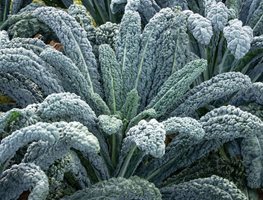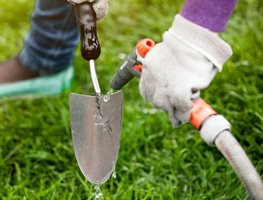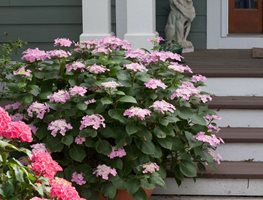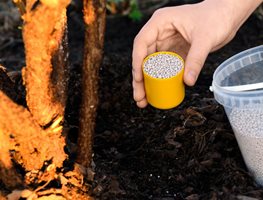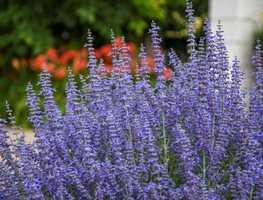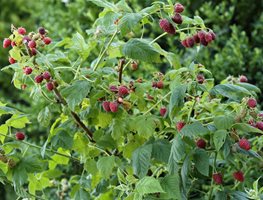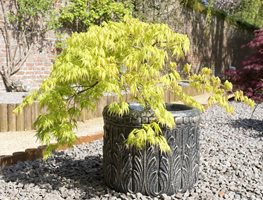10 Gardening Activities for August in Northern California
Here are a few garden reminders, inspiring ideas, maintenance tips, and places to visit this month.
1. Get Those Cool-Season Crops in the Ground
You may have started this last month, but August and into early September are your last chance to plant cool-season crops. If you want a month-by-month schedule for Northern California, the UC Master Gardeners program has some great resources for planting vegetable gardens in different climates—hot, sunny, and foggy. One interesting way to think about planting a cool-season garden is to plant varieties that you can use in fall and winter. This would include crops such as celery, carrots, broccoli, snap peas, onions, shallots, kale, collards, and winter squash. Order seeds online from Johnny’s Selected Seeds, Renee’s Garden, or Botanical Interests.
2. Clean Up and Maintain Your Garden Tools
By the end of summer, garden tools have often taken a beating, so now’s the time to give them some much-needed maintenance. It’s best if you clean garden tools after each use—but if you haven’t been doing that, don’t worry. It’s never too late to start! You can do this by wetting a clean rag with water and some rubbing alcohol and using that to clean the blades and handles. The rubbing alcohol disinfects the tool and helps prevent the spread of diseases among your plants. If you have tools that have gotten rusty use a spray such as WD-40 Specialist Rust Release Spray. Spray it on and follow the directions to remove and protect your tool against rust. A steel wool pad or attachment for a drill can go a long way in cleaning tools thoroughly. Use a file to sharpen the edges of shovels, picks, hoes, spades, and weeding tools. Be sure to store tools in a dry, covered location. For more on tool maintenance, see How to Care for Garden Tools.
3. San Francisco Self-Guided Day Trip
San Francisco is home to beautiful gardens, many within walking distance of each other! Even if you're not able to visit them all in person, you can still look at beautiful photos and plan ahead for a day out.
For our San Francisco day trip, garden designer and plant expert Kelly Kelpatrick is your local guide. Great to visit on a foggy day, or any day really, the Conservatory of Flowers is home to over 1700 species of aquatic and tropical plants! Next is the San Francisco Botanical Garden, where you truly can travel the world through plants across the 55 acres—just make sure you don’t miss the succulent garden! Right next door, you’ll discover the Japanese Tea Garden, (the nation’s oldest!) where you have to see the highly arched drum bridge (pictured).
4. Cut Back Some Varieties of Hydrangeas
For most zones throughout Northern California, hydrangeas will fade and finish their bloom season by late August. Many hydrangea varieties bloom on the previous year’s growth (this includes Hydrangea anomala subsp. petiolaris, H. quercifolia, some H. macrophylla, and H. serrata) so to avoid cutting off next year’s buds, prune right after this season’s flowers turn brown. Cut back so stems are around 1 to 2 feet long. There are some exceptions, such as reblooming hydrangeas that bloom on the current year’s growth as well as the previous year’s growth, allowing them to rebloom throughout summer. These should only be pruned for shape if needed. For more information on hydrangea care, see Growing Hydrangeas or How to Prune Hydrangeas. See Proven Winners for a wide variety of hydrangeas that include rebloomers.
5. Feed Hungry Plants
By August, plants need a refresh of fertilizer or compost because they’ve been using nutrients in the soil to produce lush growth, fabulous flowers, as well as tasty vegetables and fruits. One method is to put a fresh layer of compost across your garden, home orchard, or raised bed. You can also use mushroom compost from your local nursery. Be sure to do this early in the morning or when you’re expecting some cooler days, because extra heat combined with fertilizer can burn plants. You may also want to fertilize plants individually with specialized fertilizer: cactus and succulents, flowers, shrubs and trees, citrus and fruit trees, or palm trees. There’s also slow-release fertilizer that releases nutrients over time as you water your plants. Whenever you’re adding compost or fertilizer, be sure to water plants well afterwards to disperse the nutrients more evenly into the soil.
Don't miss what to do in the garden each month, make sure you're getting our weekly newsletter.
6. Add Flowers for Late-Season Color
Plant flowers that will bloom or continue blooming in late-summer and into fall to keep your garden filled with color longer. Plants such as chrysanthemums, coreopsis, gaura and Russian sage ('Denim 'n Lace', pictured). Find more late-season color online from Proven Winners, or shop locally at Annie’s Annuals & Perennials or Flora Grubb Gardens.
7. Cut Back Blackberry and Raspberry Canes
If you have blackberry and raspberry canes that only fruit once during the summer, cut the canes back to the ground when they are finished fruiting. If you have everbearing canes, you cut them back in the fall when the harvest is complete. Be sure to mulch well after you cut back the canes. You’ll also want to be sure that as new canes emerge you thin out growth so there are less than 10 canes per clump. This will help the plants concentrate energy and flavor into the remaining canes and berries as they develop.
8. Add to Your Houseplant Collection
During the summer, sometimes it’s just more comfortable to stay inside at the hottest times of the day, creating the perfect opportunity to style your living spaces with plants. Check out houseplant home delivery services such as The Sill, Leon & George, or Bloomscape. Each have a fine selection of houseplants that come in different sizes and with different pot styles. If you’re looking for more offbeat houseplant varieties, visit Logee’s or NSE Tropicals to order online. A great resource for houseplant advice is Summer Rayne Oakes’ YouTube channel.
9. Blooming Now
With Northern California being mostly in zones 8-10, there’s a great collection of plants blooming now through later summer.
Blooming until frost, gladiolus flowers (pictured) look great in the garden and also inside as a cut flower (cut them late in the evening or early morning when temperatures are coolest).
Dahlias are still providing happiness this month, you can deadhead to help keep them looking tidy and encourage them to continue blooming—just don’t remove the rounded, new buds!
Loving the full sun of summer, agapanthus will continue to give beautiful blue, purple, and white flowers until early autumn. Make sure their soil is well drained!
10. Water Pots Well
You’ll likely need to do extra watering this month if you have a container garden. In warmer areas you may need to water once a day. If temperatures really get hot, consider watering twice a day. Certain plants such as vegetables in pots or potted trees (for example, citrus and Japanese maples) should be watered regularly and watched carefully for sights of stress such as browning edges of leaves or excessive leaf drop. If possible, you can also move potted plants into partial shade during the hottest parts of the month or during a heat wave to give plants some relief from the sun.
If you enjoyed this information, sign up for our weekly newsletter. Each week, you'll get Garden Design's best delivered right to your inbox including design tips, plant picks, great gardens, outdoor living products, and events to enjoy — along with monthly gardening checklists just for your area.
Do you know someone who would enjoy this Northern Californa Region gardening information? Why not share it with them?
When you purchase products through links on our site, we may receive an affiliate commission. Thank you for your support.
